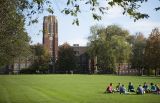United States universities favoring wealthy Chinese students over Asian-Americans has been a point of debate for some time now. With the acceptance rates in prestigious universities falling down every year, concerns among the Asian-Americans have risen about their chances of getting into good educational institutes.
Last December's statistics show that some of the reputed universities have taken in fewer Asian-Americans despite their high test scores and academic performance.
The Caixin magazine editorial notes that in the last 5 to 6 years, elite American universities have been receiving less private and public funding. So the only option left for them is to admit international students who pay full tuition fee.
Wu Yuci, the author of the editorial writes that Asians, who account for just 11 percent of the U.S. senior high school students, get unfair treatment during the admission process in these schools compared to other ethnic groups, such as African-Americans or Latinos. However, National Young Scholars comprises of 60 percent of the Asians.
A report in Quartz points out that as China's economy has developed; more rich families are willing to send their children to American schools. It writes that the daughter of Xi Jinping, current Chinese president, studies at Harvard under a pseudonym, and the son of ousted Chinese official Bo Xilai attended Columbia and Harvard.
China beats other Asian countries such as Japan, Taiwan, and India in topping the charts for having more number of students in the U.S. universities. Data from last year shows China as a major sender of international students to the US for the fourth year in a row.
Yuci states in the article that certain universities defend themselves saying that an individual's overall performance is considered during admissions. This is a subtle way of saying that Asian-Americans do not meet the leadership standards, independence and curiosity levels, the article notes.
According to the National Center of Education Statistics, total enrolment of Asian students increased to 3,595 in 2012, from 2,696 in 1994. However, the number of full-time students shows a decline from 20.6 percent in 1993 to about 16.5 percent, according to American Conservative
"The difference between those Chinese nationals and many American applicants, Asian and otherwise, is that the former can pay their way and the latter will often need institutional aid to do so," Andrea van Niekerk, a college admissions consultant was quoted saying to Quartz. "I think that is why many American kids of all ethnic backgrounds who share the burden of needing financial aid, are at risk of being squeezed out by rich Chinese applicants."
According to Richard Sander, a UCLA professor, African-Americans and Latinos are admitted more than the number required for proportional admission, Yuci writes. This means that along with the whites, Asian-Americans face discrimination as major universities try to keep a balance among ethnic groups, with the Asian ethnic groups usually making up 14 to 17 percent of the total number of students.
© 2025 University Herald, All rights reserved. Do not reproduce without permission.








